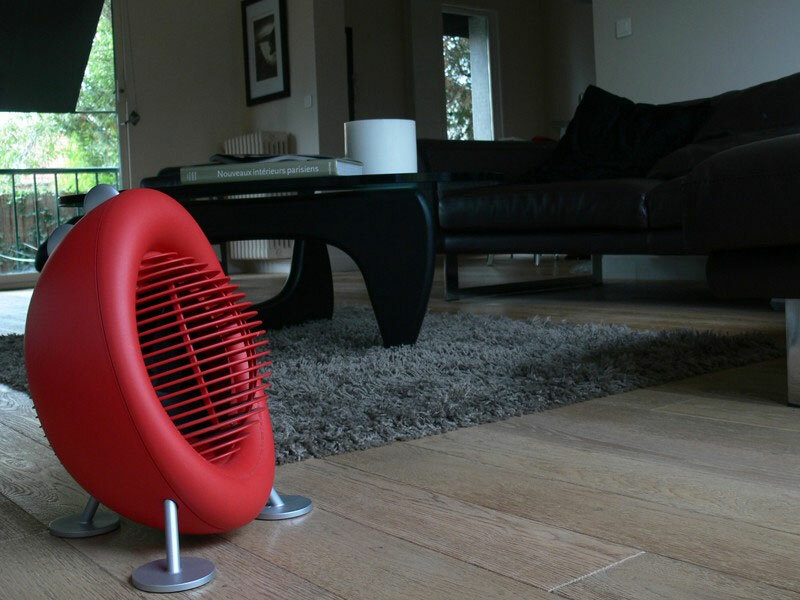To bring to the design of the kitchen a touch of originality sometimes quite minor detail. For example, such a focus as a bright and expressive potholder in the kitchen will attract the eyes and cause the admiration of manual work.
Content
- 1 Materials and tools for knitting potholders
-
2 Knitting tack hook: scheme and description
- 2.1 Flower
- 2.2 Fusilli
- 2.3 Hexagon
- 2.4 Bees
- 2.5 Sunflower
- 2.6 Lamb
- 2.7 Peacock
- 2.8 heart
- 2.9 square pot holders
-
3 Knitting needles tack
- 3.1 Tack needles for beginners
-
4 Associated circular potholder
- 4.1 In the form of an orange
- 4.2 Potholder with leaf associated spokes from the center
- 4.3 Mitts with shadow pictures
- 4.4 "Enterlak" technique
- 5 conclusion
- 6 VIDEO: Tack, Crochet - a master class.
- 7 50 options beautiful crocheted pot holders:
Materials and tools for knitting potholders
Since the purpose of tack - not only aesthetic beauty, but also the protection of the hands from burns, by the choice of materials for its manufacture should be approached in a special way.
Important! In any case, do not select yarn of viscose and silk. They will not prevent burns.
It is best suited for this purpose cotton, acrylic and wool. But they can not be combined, so as not to lose the shape of the product during operation.
Choosing a thick yarn, you should avoid any bulges in its structure, as doing so with the help of thread patterns would make it impossible to use it in the hot surfaces.
Knitting tack hook: scheme and description
Flower
Choosing the elements of floristry and experimenting with color schemes in their design, you can always create a unique thing, blend harmoniously with the interior of the kitchen. Selects the next less than two contrasting colors.
Additional Information! In order to keep the shape and color of a product, we need only periodic washing in cool water. Then follow the starch and iron it.
- Center should start with a dark color, hooked into a ring 8 stitches.
- The second row consists of 18 Art. sn
- In the third column 1 of the second row are knitted and joined one loop of another aircraft 23. Linking further 1 st.b.n. 9 is obtained with the additional loops 1 in the same column therebetween.
- Two subsequent series strapped loop gain. The top of each loop is added to the three columns without sc.
- Sixth and seventh color change but retain the previous operating procedure.
- The 10th item 7 counting down. BN to wrap them in the tab and connect to the eighth.
Tie tack can be like needles and crochet. It depends on the type of ornament and yarn thicknesses.
Fusilli
The essence of the production of this tack is that in a single circumferential row using multiple colors. The complexity of such a weave only in the fact that so far involve one color, the rest of the loop remains open.
Important! To free the loop can not be confused and not dissolve, it is necessary to consolidate their marker that can block them. These "markers" can serve as a pin or paper clip.
To produce tack require 5 colors cotton yarn of 100 g, 4 markers and the hook №4. The diameter of the finished product will be 21 cm.
Beforehand we use the notation for flowers:
A - red;
B - brick;
The - Orange;
G - yellow;
D - beige.
To start making the inner ring of the darkest colors - 1 air loop, 1 st. BN, 1 pt. SN, 2 tbsp. sn By attaching a new thread again repeat the process with each subsequent color.
In the first row we perform for each color 2 tbsp. sn one loop and one item. sn in the next st.
In the second using the same number of loops, but is repeated three times. Then everything is simple - change only the second item. sn - added to it another one. So do seven series, the last of which will already be 2 tbsp. with n. one loop and 6 art. sn the next loop of three times for each color.
In the eighth in the sequence of colors D, G, B, D, and to do to round 3 tbsp. sn and 3 tbsp. BN, combining that you can cut the thread.
The product is ready, after we associate the wrong part and fasten them to the front part by means of color D.
Special comfort help to create knitwear created with their own hands.
Hexagon
Such a tack similar to the homemade cookies. In its manufacture are used only columns with sc and air loops.
It fits for a very simple scheme.
Bees
"Bees" in the kitchen can please kids who love to observe or assist in the cooking process to their parents.
Mischievous Bees very delight young children.
Required for the manufacture of yarns made of black cotton, yellow and white - 50 grams each. For the eyes, nose and mouth should buy mercerized thread of black, white and red colors. Hooks №1,5 - for yarns and 3.5 - for cotton.
Knit such tack should, in accordance with the diagram.
Perform basic pattern under the scheme, given that the decrease in the beginning of the series is to pass, after that it's just not provyazyvayut.
Sunflower
The scheme of this product is very similar to the scheme tack "Flower".
Very beautiful and simple by potholder.
Do all the same steps, starting with a flat circle. Then knitted petals 12, tying them with three rows and columns without nakida continue scheme.
Driving tack "Flower".
Lamb
This tack will consist from several parts knit to be in stages.
Each sheep is knitted separately.
The main part is knitted in the form of a circle, according to the scheme. The last row is worth taking a darker shade.
Scheme sheep body.
Next knit very easy by forelock, and knitted fabrics yarn darker
Scheme Chubchik lamb.
To make the legs, we collect strands of white in 9 stitches and 3 do the lifting loop. In the fifth loop provyazyvaem first one, then 3 column with sc, 2 polustolbika, 1 tbsp. BN, 3 tbsp. sn at one loop, 1 tbsp. BN, polustolbika 2, 4 tbsp. sn and 3 air loop - close to the initial loop.
For dark colored yarn eyelets recruit 8 stitches and closable in a ring. In the second loop to add 1 sc, 1 sc and st. BN, 1 and 3 polustolbik polustolbika in one loop.
Ears and legs make a pair.
Peacock
For the first row of the basics you need to dial 2-3 air loops and close them in a circle.
At first, take the thread beige.
In the second case 7 polustolbikov. At 3, 4 and 5 do rows 17, columns 37 and 50 respectively with sc.
Finished pieces complement any contrasting thread provyazyvaya number of columns, without sc. But 8 loops is important to leave intact. (16)
Tied with a black contrast thread.
Using columns with nakida knit tail. "Fan" tally 4-5 rows - no more, increasing the number of "fans" in each of them. (17)
Then enter the string orange. And in a series of 3 - burgundy.
Again using contrasting thread binds more and tail. (18)
Black thread is knitted feathers on a peacock's tail.
On average, the fan, do not forget to make a loop. (19)
Collar need to tack to hang next to the stove.
Columns, without sc knit body. In the end it is necessary to pull the last thread to lift the body to the tail.
Torso knit dark color.
Next, sew the eyes, beak embroider, sew and tie the legs head to the body. (20-21)
Here's a handsome peacock yarn remnants.
heart
This tack will be a nice gift for Valentine's Day for your mom, sister or friend.
The original tack spokes fit in very quickly.
square pot holders
Conventional square potholder fit very simple. Give it originality can be experimenting combinations of colors, or adding to the front of the small crocheted flowers.
It looks very nice tack in white and purple flowers.
Knitting needles tack
Spokes also purchased as a hook - in accordance with the width of the thread. Number of needles and will be its size.
With the help of needles can also be knit pattern or ornament, but it is better to start with a very simple knitting techniques - multicolored stripes.
Tack needles for beginners
For more information and advice:
- The alternation of right and wrong hinge allows for bulk pattern.
- Secret welcome for beginners masters - embroidery. If you can not tie a beautiful ornament needles, you can resort to the embroidery over an associated surface.
- Little secret for determining spokes size: slightly twist the yarn in half - the ideal thickness of the spokes - the thickness of the spun yarn.
Newcomers should begin with simple patterns in the form of cells or stripes.
For the manufacture of a simple two-tone pot holders need to dial 11 loops and tie the 20 rows of each color alternately face, the wrong side. (25, 26)
Pot holders in the form of colored squares.
Associated circular potholder
In the form of an orange
For such a tack need 50 grams of cotton yarn white and yellow or orange flowers and the spokes 4.5 mm.
After each series of spokes to be flip. All loops in this facial:
1 number - 14 tie loops, leaving the 15-th out of work;
2nd and subsequent rows from the wrong side provyazyvat facial loops;
3, 5, 7, 9, 11 rows - decrease each time by 2 loops;
13th and 14th - knit all 15 loops.
The last 14 series have yet to repeat 10 times, and then duplicate rows 1-13. White thread to close all the loops in purl row.
Tack associated shortened rows.
Potholder with leaf associated spokes from the center
This tack is very fit very simple.
yarn color can be very different.
Mitts with shadow pictures
Such a pattern is created by the transition to the front surface of the underside and back. (29-31)
This tack is very easy fit scheme.
"Enterlak" technique
This way of knitting will create a product that is similar to quilting.
1st row - knit purl side 21 of the loop.
2nd - every two hinges cranking knitting, alternating between the underside and the front loop.
Third - in each inner row add one eyelet until we get the first triangle.
Of these triangles will be the product.
Simply stunning potholders kitchen knit obtained if their spokes enterlak technology.
conclusion
Crochet or knitting needles can be a nice way to demonstrate creativity, and finished products will help to fill the house with warmth and comfort. But not all store merchandise can assist in the implementation of pans, so the embodiment of the author's ideas better start on their own. Besides, a thing made by the hands, always brings more joy, and eventually even gains value. Creating tack will not take a lot of time and does not require much effort. One has only to show imagination and experiment with the colors of yarn used, and is irreplaceable and incredibly beautiful thing in the kitchen.



